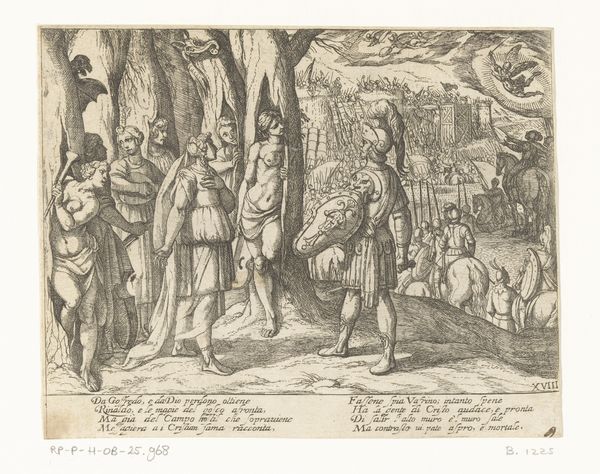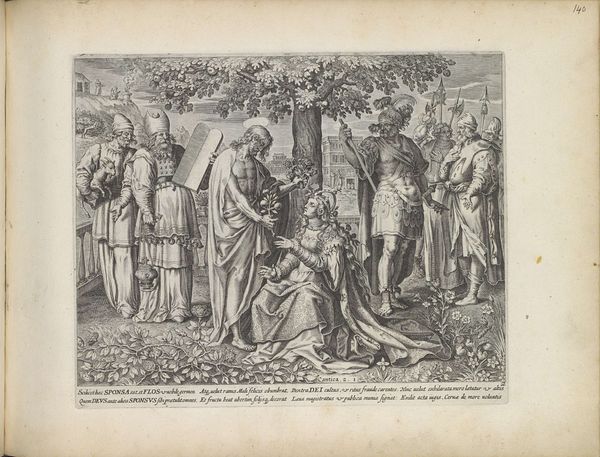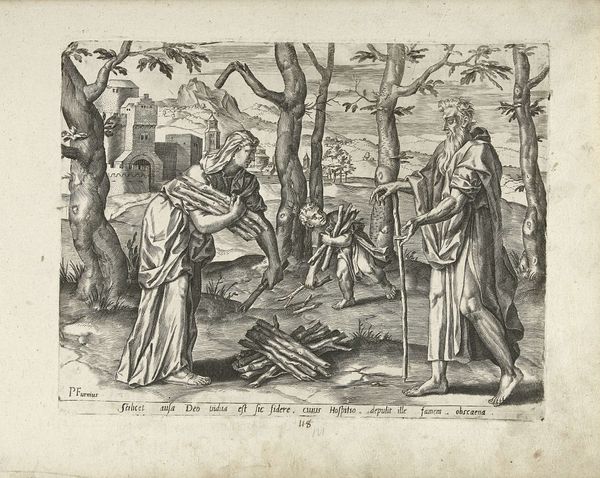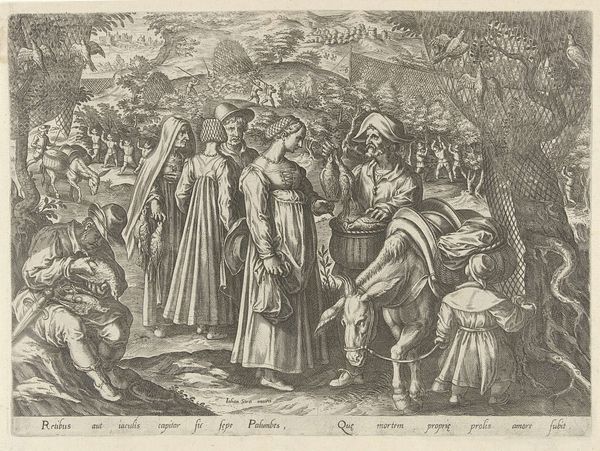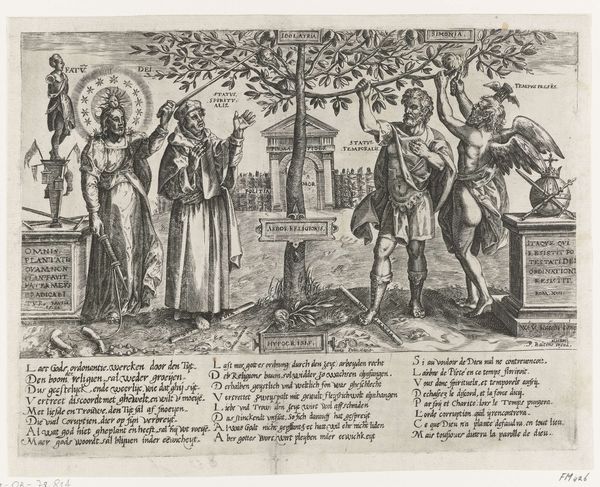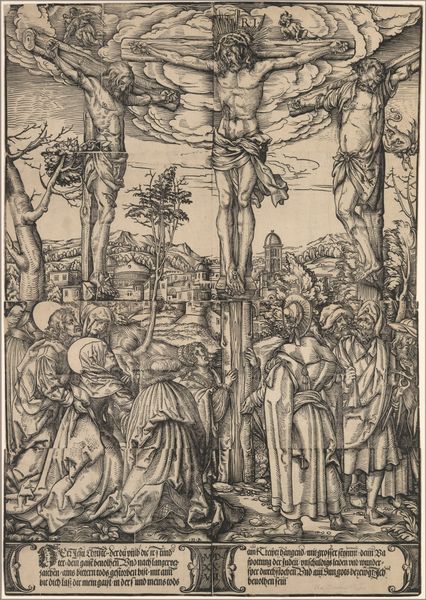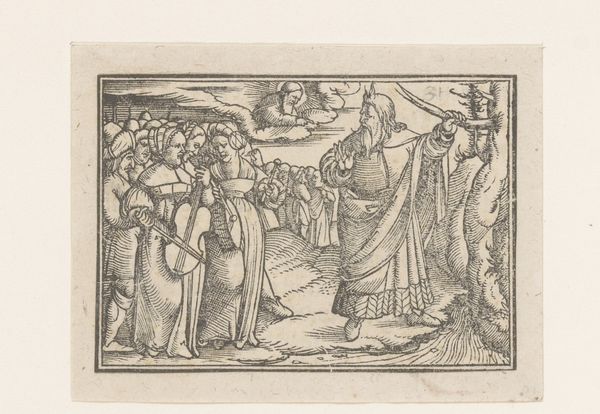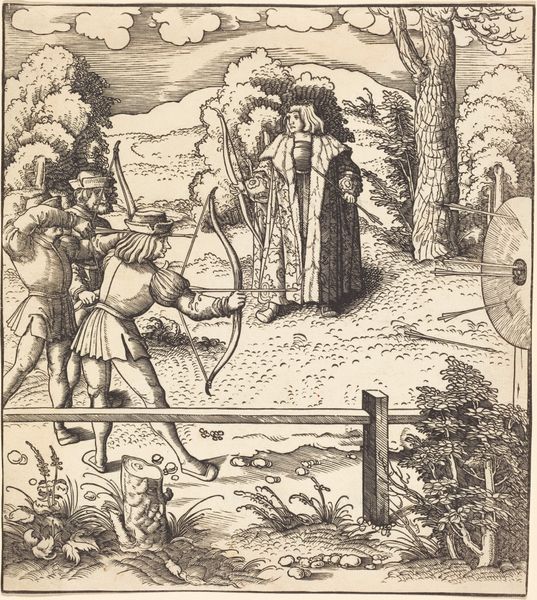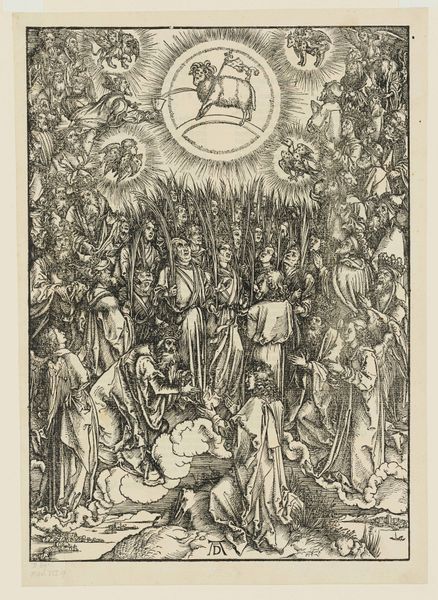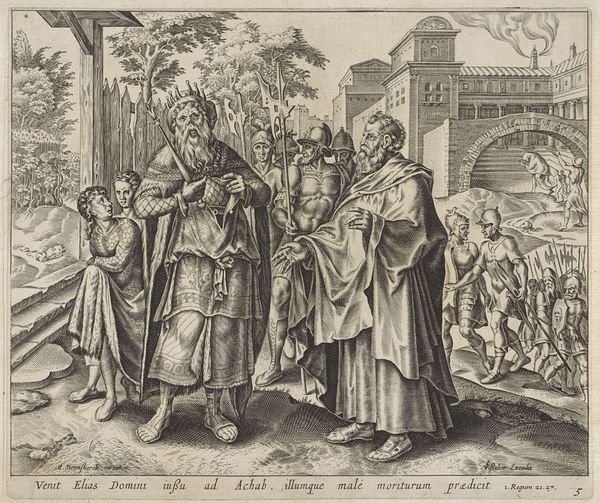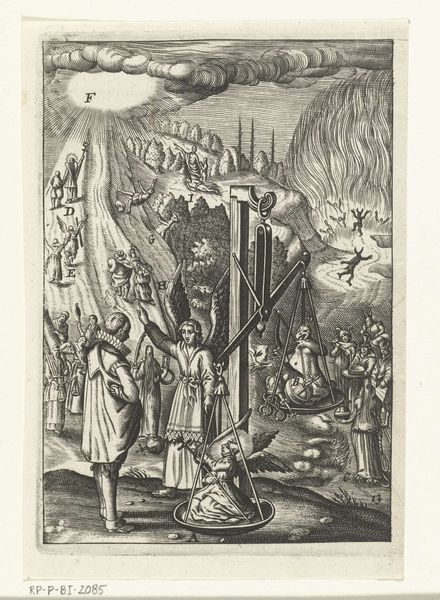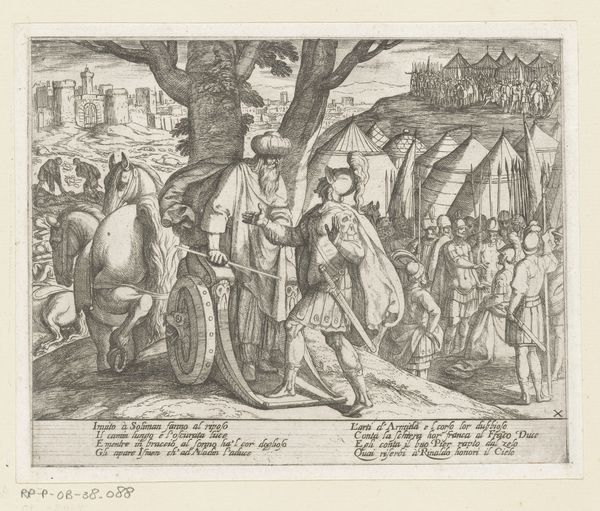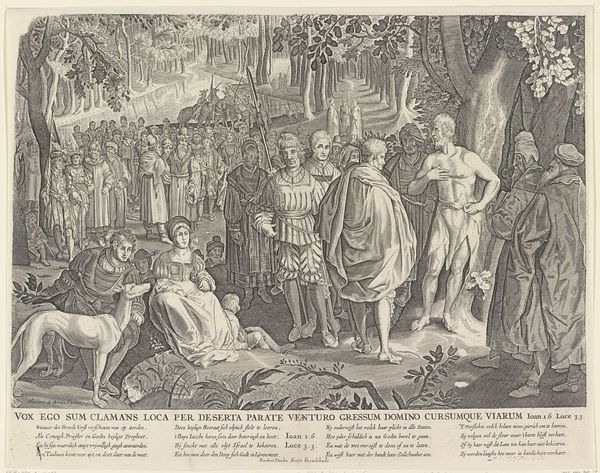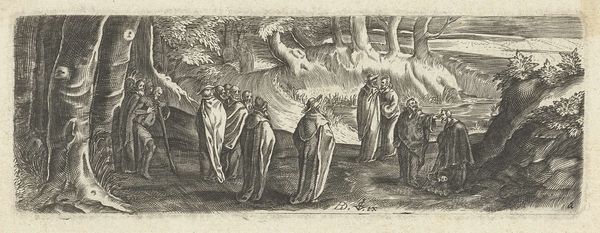
print, engraving
# print
#
figuration
#
line
#
genre-painting
#
northern-renaissance
#
engraving
Dimensions: height 215 mm, width 252 mm
Copyright: Rijks Museum: Open Domain
Pieter Huys created 'Boom van Roomse afgoderij' around 1570, using engraving. The stark monochrome emphasizes the incisive lines, essential for conveying the satirical message. Engraving is an intensive, skilled process. The artist uses a tool called a burin to carve lines directly into a metal plate, creating an image in reverse. This plate is then inked, and the surface wiped clean, leaving ink only in the carved lines. Pressed onto paper, the image is transferred. The resulting print is a mirror image of the original design on the plate. Consider the labor involved: the physical effort of cutting into the metal, and the intellectual labor of designing the complex composition. The work critiques the Catholic Church, presenting it as a corrupt tree laden with symbols of greed and false idols. The repetitive, almost mechanical nature of the engraving process mirrors the systematic nature of the criticized religious practices. Ultimately, this print’s power lies in its intricate details, made possible through skilled labor and material knowledge. It challenges us to consider the social and political context in which art is produced.
Comments
No comments
Be the first to comment and join the conversation on the ultimate creative platform.
